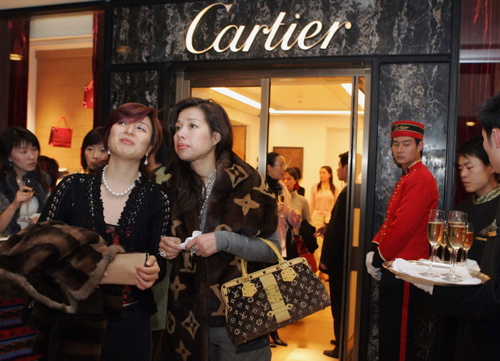Chinese wannabe Luxury Consumers Growing
According to a recent report by business consulting firm Bain & Company, entitled ?China and Chinese Customers in the Global Luxury Goods Market? and co-written by Claudia D’Arpizio and Federica Levato, the process of this market maturation has been caused by three major factors: overexposure to luxury items, digital and mobile proliferation and a shift to experiences over goods.
Overexposure to Luxury
According to global consulting firm McKinsey, worldwide luxury consumption dropped in 2016 to its lowest level since 2009, increasing the focus on Chinese consumers. As a region, China represents just 7% of the luxury market, but Chinese consumers make up just under a third of all luxury consumers worldwide. However, as the Chinese economy slows, there is a growing concern that Chinese spenders may be losing their passion for luxury items.
Whilst stereotyped in the past as undiscerning spenders who will buy anything with a luxury label (the ?omnivores?), Chinese consumers are proving this label to be outdated. According to the Bain report, luxury brands invested in China opened extensive store networks that went from being a novelty to becoming the norm. The high saturation of luxury stores, in the last 10 to 15 years, has slowly turned Chinese consumers into more confident and discerning buyers. Consumers are now in search of more novel and unique labels, including experiential luxury and art.
E-Commerce
The hunt for the new and unusual is not only being instigated by an overexposure to luxury brands, but also due to the evolution of social media and e-commerce platforms. There has been a substantial increase in online shopping in China in recent years, characterized by a strong mobile-first purchase pattern. According to Bain’s report, 78% of Chinese consumers get their information on luxury goods via the internet. It also found that cities, which have long held ?omnivore? type spending habits, have found access to independent luxury brands online, which have helped to change their attitudes to luxury. ??
Another type of spender has emerged in China, due to online access, the emerging middle class and changing attitudes. Bain calls this the ?wannabe? consumer, one who craves accessible brands as they strive to improve their status. High-end brands were once held only for the affluent class in China, but these brands have recognized a shift in spending and changed to accommodate the ?wannabes?. Mercedes-Benz, for example, has created its Mercedes me package, where services, products and lifestyle offers are on display for those who cannot afford a Mercedes-Benz. This way, customers can begin to associate with the brand, even though they cannot afford to buy the cars. ?
The Luxury Experience
According to the South China Morning Post, China’s new penchant for luxury experiences over goods has begun. The rising free independent traveller trend in China is an untapped opportunity for luxury brands. Changes to social norms in the country have started to discourage the purchase and display of luxury goods. In contrast, experiential luxury, such as, high-end travel has increased. Luxury brands, such as, Gucci and Louis Vuitton are already offering unique travel experiences to Chinese consumers, using travel mobile apps and providing travellers to discover the story behind the brand.
Although 60% of Chinese consumers still prefer package tours to long distance destinations, young people, especially millennials are opting to travel as independent travellers. As millennials will drive 55% of expansion in China’s consumption spending, the average Chinese traveller is set to change. Compared with their parent’s, millennials have better language skills, are more affluent and more educated. They tend to use social media accounts and online travel reviews, and as luxury travellers expect pristine environments and customised service.
According to the Bain report, while millennials will make up the biggest number of Chinese luxury consumers, the increasing number of working women in China will also certainly influence overall shifts in the performance of luxury categories, as will middle class consumers looking for accessible luxury and entry-priced products.
















There are no comments
Add yours